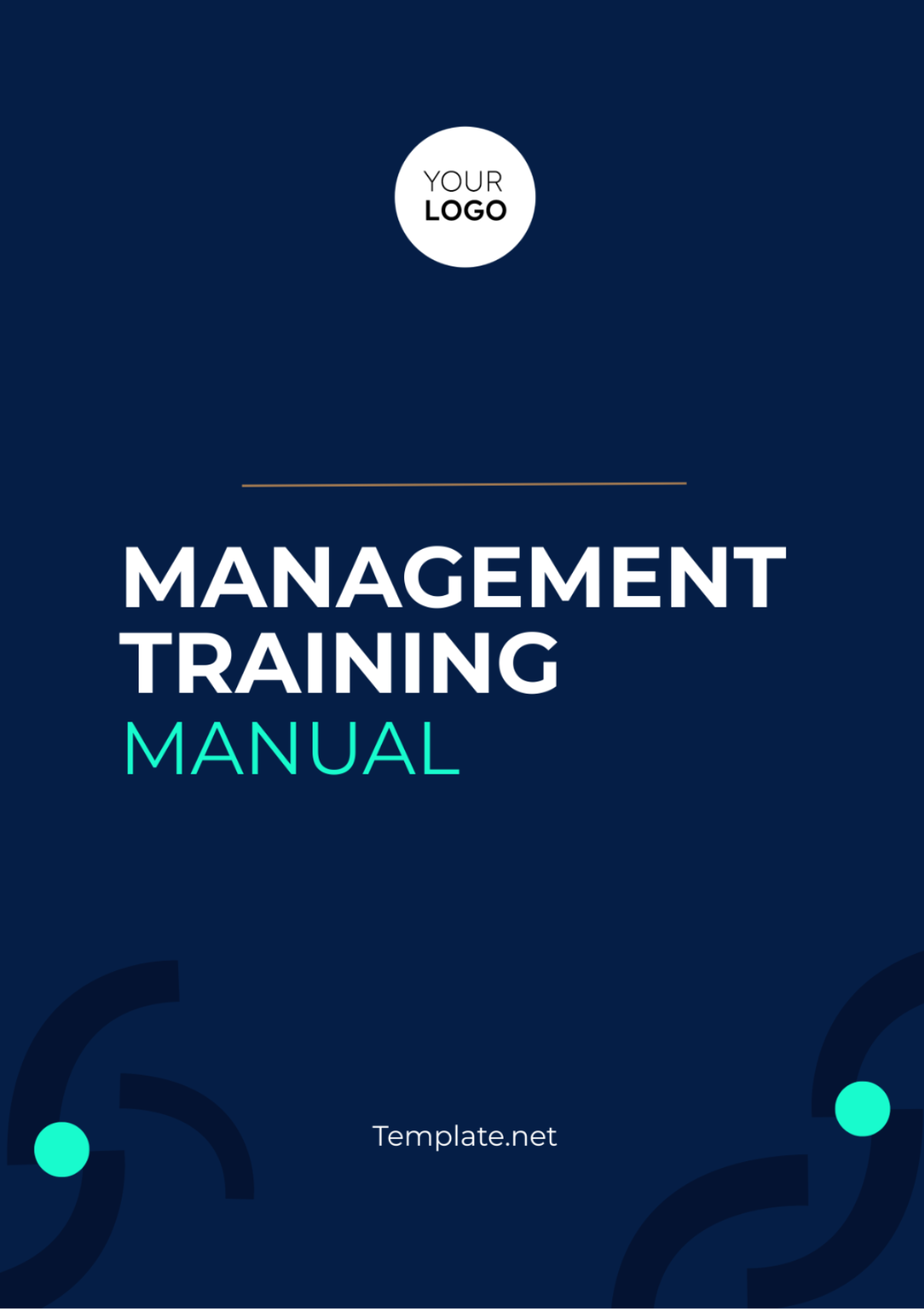Training Manual for Marketing
Analytics Tools
I. Introduction
Welcome to the [Your Company Name] Marketing Training Manual for Marketing Analytics Tools. In today's data-driven marketing landscape, harnessing the power of analytics tools is essential for success. This comprehensive guide is designed for marketing professionals like you, equipping you with the knowledge and skills to effectively utilize various analytics tools. By the end of this training, you'll be able to make data-driven decisions, optimize marketing strategies, and drive measurable results.
II. Getting Started
Welcome to the Getting Started section of the [Your Company Name] Marketing Training Manual for Marketing Analytics Tools. This section will help you lay the foundation for your analytics journey.
A. System Requirements
Before diving into analytics, ensure that your system meets the following requirements:
Operating System: Windows 10 or macOS Catalina
Browser: Google Chrome (recommended) or Mozilla Firefox
Internet Connection: Broadband with a minimum speed of 10 Mbps
Hardware: 8GB RAM, Dual-core Processor
B. Software Installation
Follow these steps to download and install the necessary analytics tools:
Download the tool from the official tool website.
↓
Run the installer and follow the on-screen instructions.
↓
Enter your [Your Company Name] credentials when prompted.
↓
Complete the installation process.
C. Account Setup
Learn how to set up your analytics tool account:
Go to the Tool Website.
↓
Click "Sign Up" or "Create an Account."
↓
Fill in your details, including [Your Name] and [Your Company Email]
↓
Verify your email address by clicking the link sent to your inbox.
D. User Access Permissions
Understand how to manage user access:
Grant access to team members based on their roles.
Specify who can view, edit, or export data.
By following these steps, you'll be well-prepared to embark on your marketing analytics journey with confidence.
III. Tool Overview
In this section of the [Your Company Name] Marketing Training Manual for Marketing Analytics Tools, we will provide you with a concise overview of the primary analytics tools you'll be using to supercharge your marketing efforts.
Google Analytics: A powerful web analytics tool that helps you track website traffic, user behavior, and conversions. Gain insights into your website's performance and visitor demographics.
Facebook Insights: Explore the analytics dashboard within Facebook to measure the success of your social media campaigns, understand your audience, and refine your content strategy.
HubSpot Analytics: HubSpot's comprehensive analytics suite offers insights into your inbound marketing efforts, email campaigns, and customer relationship management (CRM) data.
SEMrush: Optimize your SEO strategy by analyzing keywords, tracking rankings, and monitoring your competitors' online presence using SEMrush.
Mailchimp Analytics: Measure the effectiveness of your email marketing campaigns, track subscriber engagement, and fine-tune your messaging for better results.
Throughout this manual, we'll delve into each tool's features, providing you with the skills and knowledge needed to extract valuable insights for data-driven marketing decisions.
IV. Data Collection
In the [Your Company Name] Marketing Training Manual for Marketing Analytics Tools, the Data Collection section is pivotal for obtaining the data you need to drive your marketing strategies. Below are key steps to efficiently collect and consolidate data:
V. Data Analysis
In the [Your Company Name] Marketing Training Manual for Marketing Analytics Tools, the Data Analysis section is where the magic happens. Here, you'll learn how to transform raw data into actionable insights to supercharge your marketing efforts.
These data analysis techniques will help you identify opportunities, measure campaign effectiveness, and refine your marketing strategies for maximum impact.
Generate standard reports or create custom reports tailored to your marketing goals using the analytics tool's reporting features.
Understand the significance of key marketing metrics and key performance indicators (KPIs) like conversion rate, click-through rate, and bounce rate.
Explore how to segment your audience based on demographics, behavior, and other criteria to target specific customer groups effectively.
Create engaging visualizations such as charts, graphs, and dashboards to simplify complex data and communicate insights clearly.
Learn to set up and analyze A/B tests to optimize marketing campaigns by comparing different variants for improved performance.
Dive into attribution modeling techniques to understand how different touchpoints contribute to conversions, aiding in resource allocation.
Develop the skills to interpret data trends, anomalies, and correlations, enabling data-driven decision-making.
VI. Data Visualization
Effective data visualization is essential for communicating complex marketing data clearly. In this section of the [Your Company Name] Marketing Training Manual for Marketing Analytics Tools, you'll discover how to create compelling visualizations such as charts, graphs, and dashboards. These visual aids not only enhance your understanding of data but also empower you to convey insights to stakeholders efficiently, facilitating data-driven decisions and actionable marketing strategies.
VII. Campaign Tracking
In the [Your Company Name] Marketing Training Manual for Marketing Analytics Tools, the Campaign Tracking section is crucial for assessing the performance of your marketing campaigns and optimizing your strategies. Here are the key components:
Setting Up Campaign Parameters
UTM Codes
Monitoring Metrics
Attribution Models
Testing and Optimization
VIII. Audience Segmentation
In the [Your Company Name] Marketing Training Manual for Marketing Analytics Tools, the Audience Segmentation section focuses on tailoring your marketing efforts to specific customer groups for targeted engagement. Key components include:
Defining Segmentation Criteria
Segmentation Strategies
Tools for Segmentation
Personalization Techniques
Monitoring and Adjusting
By mastering audience segmentation, you'll tailor your marketing efforts to resonate with different customer groups, ultimately boosting campaign effectiveness and ROI.
IX. Reporting and Metrics
In the [Your Company Name] Marketing Training Manual for Marketing Analytics Tools, the Reporting and Metrics section delves into the critical aspect of measuring and presenting marketing data effectively to drive informed decision-making. Key components include:
1. Creating Custom Reports: Learn to craft custom reports tailored to your specific marketing goals and metrics, providing insights into campaign performance.
2. Key Metrics: Explore essential marketing metrics and key performance indicators (KPIs) such as click-through rates, conversion rates, and customer acquisition costs.
3. Data Visualization: Master data visualization techniques, including creating charts, graphs, and dashboards, to convey data insights clearly and persuasively.
4. Automated Reporting: Discover methods for automating report generation and distribution to save time and ensure regular updates for stakeholders.
5. Interpreting Results: Understand how to interpret and derive actionable insights from your reports, enabling data-driven decision-making for campaign optimization.
X. Advanced Analytics
To illustrate the potential of advanced analytics, we'll explore a hypothetical scenario where your company, [Your Company Name], leverages predictive modeling for sales forecasting. As we delve into predictive analytics, we'll use a bar graph to demonstrate how accurate forecasts can transform business strategies and drive success.
XI. Troubleshooting
The "Troubleshooting" section of the [Your Company Name] Marketing Training Manual for Marketing Analytics Tools is your resource for addressing common challenges that may arise during your analytics journey. Whether you encounter technical issues, data discrepancies, or unexpected errors, this section provides practical solutions and guidance. It equips you with the know-how to swiftly diagnose problems, find root causes, and implement corrective measures, ensuring a smooth analytics experience. By mastering troubleshooting techniques, you'll minimize disruptions, maintain data accuracy, and keep your marketing strategies on track, all while maximizing the value of your analytics tools.
XII. Best Practices
In the [Your Company Name] Marketing Training Manual for Marketing Analytics Tools, the "Best Practices" section is your compass for achieving optimal results in your marketing analytics endeavors. Below are key best practices, categorized for your convenience:
A. Data Collection and Management
Consistent Data Sources: Ensure data consistency by using the same tracking methods and sources across campaigns.
Data Validation: Regularly validate data to identify and rectify inaccuracies promptly.
B. Data Analysis and Interpretation
Periodic Reviews: Conduct regular reviews of data to identify trends and changes in performance.
Benchmarking: Compare your performance against industry benchmarks to set realistic goals.
C. Reporting and Visualization
Customization: Customize reports and dashboards to focus on KPIs relevant to your business objectives.
Clarity: Use clear and concise visualizations to facilitate easy interpretation of data.
D. Campaign Optimization
A/B Testing: Continuously run A/B tests to refine campaigns based on data-driven insights.
Iterative Approach: Implement iterative improvements based on analytics findings to enhance campaign effectiveness.
By adhering to these best practices, you'll harness the full potential of your analytics tools, drive better decision-making, and elevate your marketing strategies to achieve superior results.
Marketing Templates @ Template.net

















































